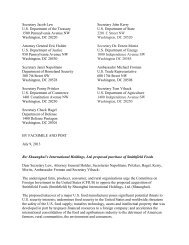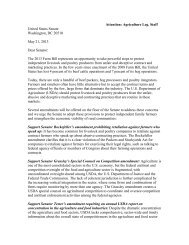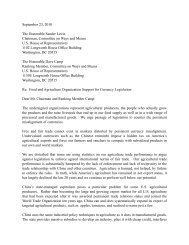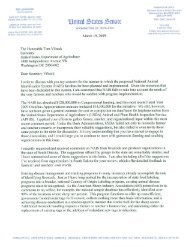Exhibit 8, 100416 Brazil FMD Risk Evaluation - R-Calf
Exhibit 8, 100416 Brazil FMD Risk Evaluation - R-Calf
Exhibit 8, 100416 Brazil FMD Risk Evaluation - R-Calf
You also want an ePaper? Increase the reach of your titles
YUMPU automatically turns print PDFs into web optimized ePapers that Google loves.
ANNEXES<br />
Annex 1. Hazard Identification: Foot-and-Mouth Disease Virus<br />
Etiologic Agent<br />
Family Picornaviridae, Genus Aphthovirus, types O, A, C, SAT1, SAT2, SAT3, and Asia 1.<br />
Status in the United States<br />
<strong>FMD</strong> virus was eradicated from the United States in 1929.<br />
Epidemiology<br />
<strong>FMD</strong> is a highly communicable disease of cloven-hoofed animals caused by an Aphthovirus of the<br />
family Picornaviridae. <strong>FMD</strong> has seven immunologically distinct serotypes (O, A, C, SAT1, SAT2,<br />
SAT3, and Asia 1). The O, A, and C serotypes have historically been found in South America [44].<br />
Research indicates that one serotype does not confer protective immunity against the other six; thus<br />
a disease outbreak can be caused by one serotype or a combination of serotypes [45].<br />
<strong>FMD</strong> virus serotype O (PanAsia strain) has been isolated in over 60 percent of positive samples<br />
received by the World Reference Laboratory for <strong>FMD</strong> in the United Kingdom (Institute for Animal<br />
Health, Pirbright Laboratory). Along with being the most prevalent type O strain, the PanAsia strain<br />
is also the most widely distributed, causing <strong>FMD</strong> outbreaks in many parts of Africa, Asia, and South<br />
America as well as in Europe since 1998. This virus strain can infect a wide range of species<br />
including cattle, water buffalo, pigs, sheep, goats, and gazelles.<br />
<strong>FMD</strong> virus can be transmitted by direct or indirect contact or aerosol. Fomites (items such as feed,<br />
drinking water, equipment, animal products, human clothing, transportation vehicles, rodents, stray<br />
dogs, wild animals, and birds) can transmit <strong>FMD</strong> over long distances. The five main elements that<br />
influence the extent of <strong>FMD</strong> spread are:<br />
The quantity of virus released<br />
The means by which the virus enters the environment<br />
The ability of the virus to survive outside the animal body<br />
The quantities of virus required to initiate infection at primary infection sites<br />
The period of time the virus remains undetected [46, 47]<br />
The incubation period of the <strong>FMD</strong> virus is 2 to 14 days in cattle, depending on the viral strain and<br />
dose and the level of susceptibility of the animal [48]. Morbidity in unvaccinated herds can be high,<br />
but mortality usually does not exceed 5 percent. If an outbreak occurs during the calving season,<br />
calf mortality can be considerable [49]. Young calves may even die before clinical signs appear,<br />
because the virus attacks the heart muscles [48].<br />
The respiratory tract is the usual route of infection in species other than pigs. Infection can also<br />
occur through abrasions of the skin or mucous membranes. In cattle and sheep, the earliest sites of<br />
virus infection and possibly replication appear to be in the mucosa and the lymphoid tissues of the<br />
pharynx. Following initial replication in the pharynx, the virus then enters the bloodstream.<br />
Viremia in cattle lasts for 3 to 5 days; as a result, the virus spreads throughout the body and<br />
establishes sites of secondary infection [50].<br />
APHIS <strong>Evaluation</strong> of the Status of the <strong>Brazil</strong>ian State of Santa Catarina 71











